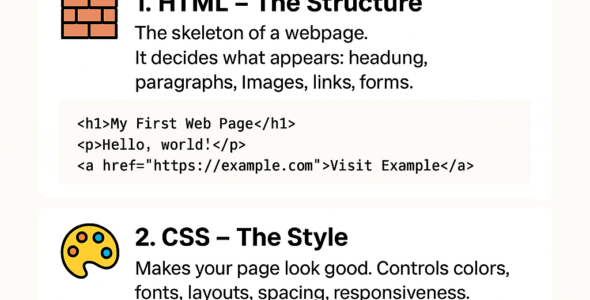Javascript Async Programming and Callbacks with syntax and examples
Async Programming:
- Async programming allows code to run asynchronously, improving performance and responsiveness.
- Async programming uses callbacks, promises, and async/await to handle asynchronous operations.
Callbacks:
- Callbacks are functions passed as arguments to other functions.
- Callbacks are executed when an operation is complete.
- Callbacks can be used to handle asynchronous operations.
Callback Syntax:
- Callback function:
- function callback() { code }
- Passing a callback:
- function asyncOperation(callback) { code; callback(); }
Examples:
- Callbacks:
// Callback function
function logData(data) {
console.log(data);
}
// Passing a callback
function fetchData(callback) {
// Simulate async operation
setTimeout(() => {
const data = 'Async data';
callback(data);
}, 2000);
}
fetchData(logData); // Output: Async data
Promises:
- Promises represent the result of an asynchronous operation.
- Promises can be used to handle asynchronous operations.
- Promises have three states: pending, resolved, and rejected.
Promise Syntax:
- Creating a promise:
- const promise = new Promise((resolve, reject) => { code })
- Handling a promise:
- promise.then((data) => { code }).catch((error) => { code })
Examples:
- Promises:
// Creating a promise
const promise = new Promise((resolve, reject) => {
// Simulate async operation
setTimeout(() => {
const data = 'Async data';
resolve(data);
}, 2000);
});
// Handling a promise
promise.then((data) => {
console.log(data); // Output: Async data
}).catch((error) => {
console.error(error);
});
Async/Await:
- Async/await is a syntax sugar for promises.
- Async/await makes asynchronous code look synchronous.
- Async/await uses the async and await keywords.
Async/Await Syntax:
- Async function:
- async function asyncFunction() { code }
- Await expression:
- const data = await promise;
Examples:
- Async/Await:
// Async function
async function fetchData() {
// Simulate async operation
const data = await new Promise((resolve) => {
setTimeout(() => {
resolve('Async data');
}, 2000);
});
console.log(data); // Output: Async data
}
fetchData();
By mastering async programming and callbacks, you will be able to write efficient and effective asynchronous code. Remember to practice and experiment with different examples to solidify your understanding.
Next Topic:
- Module 7: Error Handling and Debugging
In this module, we will explore error handling and debugging techniques in JavaScript. We will learn how to use try/catch blocks, error objects, and debugging tools to handle and debug errors.
